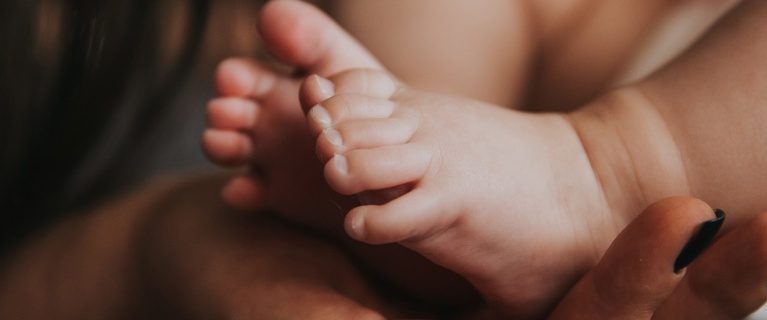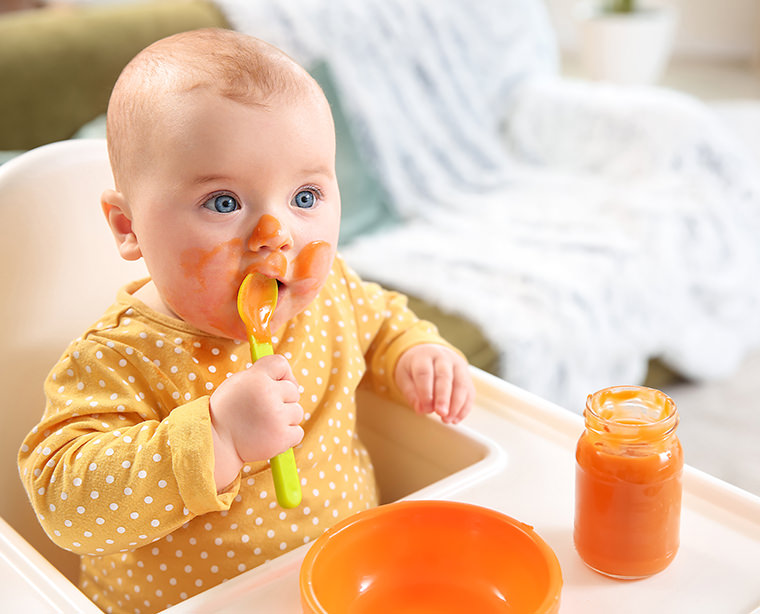

Pregnancy? Q&A with a patient

Is treatment dangerous during pregnancy? Women are afraid of passing eczema on to their babies, what can we tell them? Is there a risk of the hormonal disturbances making eczema worse?
Is treatment dangerous during pregnancy?
Basic treatments
Eczema is treated first and foremost by combining good hygiene practices with daily hydration, with added anti-inflammatory treatment in case of a flare-up.
- During pregnancy, skin naturally becomes physiologically drier, in all women, whether or not they have an atopic history. It’s recommended to keep up good bathroom habits: relatively short showers (less than 5 minutes) in water that’s not too hot, using a soap-free product, such as a cleansing oil, and just once a day.
- In terms of emollient (moisturizer), it’s recommended to increase skin moisturization, for example by applying twice a day, or switching to an oilier emollient: a balm is more moisturizing than a cream, and a cerate is more moisturizing than a balm.
- In case of eczema, the patient should continue topical corticosteroid treatment: it’s not dangerous for the mother or the baby and doesn’t increase the risk of stretch marks. It’s important to remind patients when they should use topical corticosteroids, i.e. as soon as their skin feels itchy or becomes red or rough. Very often, patients wait too long because they’re unaware of these rules, but the longer they wait, the longer it will take to control the eczema. They can apply the same amount as before the pregnancy: one fingertip unit for two palms of the hand, once a day, until the redness, itching and rough skin disappear. They should continue using emollients, even if their skin is healthy. Unfortunately, a lot of medical staff advise discontinuing topical corticosteroid treatment during pregnancy because they lack the appropriate scientific data.
- Conversely, it’s currently recommended to stop applying tacrolimus during pregnancy. That said, no side effects have been reported in cases where tacrolimus was applied during the first two weeks of pregnancy.
Regarding “systemic” treatments
Regarding “systemic” treatments, administered as injections or tablets (methotrexate, cyclosporine and biotherapy), patients planning a pregnancy must inform their prescribing physician of these, and seek medical advice if they find out they are pregnant.
Women are afraid of passing eczema on to their babies, what can we tell them?
This is a very legitimate fear, because transmission exists. When both parents have an atopic background, the risk of the baby having eczema increases to 70%. Can they take preventive measures? The answer is “yes”, although the results are not perfect.
European studies have validated intake of pro and prebiotics during pregnancy, they are safe and can be given in addition to what is given by midwives. They are an additional plus (probiotics = bacteria from the family Lactobacillaceae, the appropriate strain for eczema being Lactobacillus rhamnosus GG; prebiotics = plant fibers necessary for good probiotic survival). They can be taken throughout pregnancy and breastfeeding.
Is there a risk of the hormonal disturbances making eczema worse?
In principle, no, but everything is possible: some women will see a significant improvement, and in others it gets much worse. You just need to adapt the treatment and reassure them.
What about breastfeeding?
The data has evolved significantly in the last 50 years. We now know that breastfeeding does not protect babies against risk of eczema, and, more importantly, that it’s important to continue eating foods such as peanuts and fish during pregnancy.
Duration of breastfeeding is an important factor – a good age for introducing new foods is 5 months, breastfeeding alone beyond this period increases risk of eczema. The aim is to promote development of as broad a food tolerance as possible.
Mothers with atopic skin are more likely to get cracked nipples while breastfeeding. Treatment must be chosen bearing in mind that the baby will suck on the products. Midwives and maternity staff are aware of the necessary precautions, so follow their advice. If cracks appear despite the recommended treatments, if they are very painful and there’s a risk of them becoming infected, it’s better to express milk and give it in a bottle, and to use this period to apply repairing creams until the cracks disappear.
5/ Anything else?
Stop smoking!

